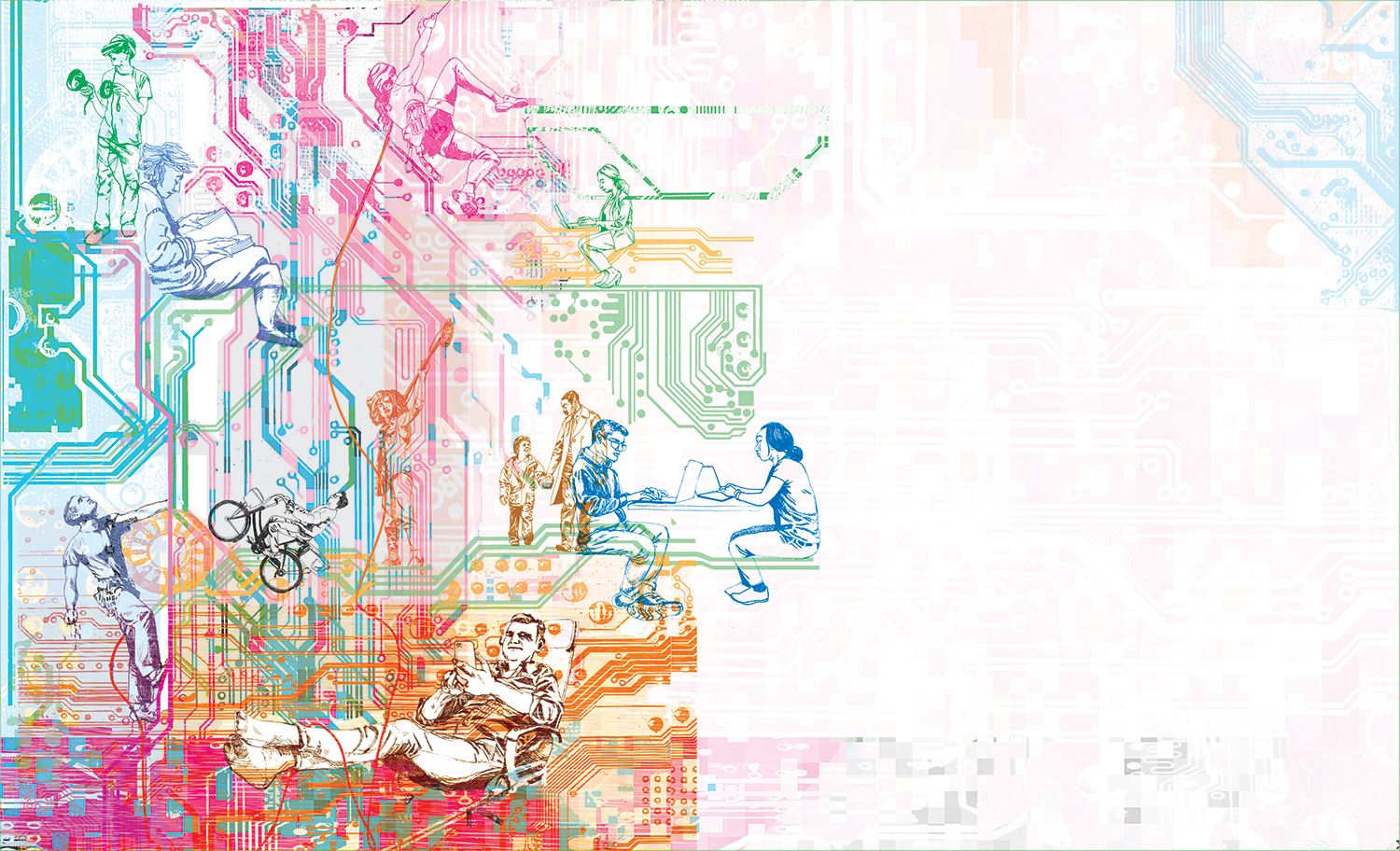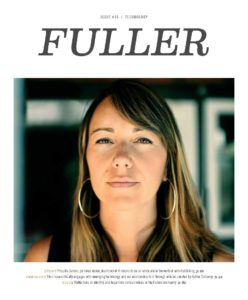
In his 1950 book on television technology, Edward Carnell, one of Fuller’s former presidents, opens with a critical reflection on what he calls “mixture.” By doing so, Carnell was able to make two prescient claims (among others) at a time when TV was barely a blip on anyone’s radar. First, he highlighted the important role that Christians and theologians of his generation played in interpreting, understanding, and directing what was, and continues to be, a cultural innovation brimming with unrealized possibilities. Second, based on how pervasive he predicted it would be (little did he know!), Carnell also suggested that this emerging technology contained the potential not only to benefit society, but also to wreak unforeseen havoc on the least of these.
“Every piece of art, every cultural token, every invention—however enrapturing when first appraised—reveals, when minutely scrutinized, some areas of defection mottled in with the perfection. . . . Every piece of technology is miscalculated at some point. . . . Mixture, like the poor, is always with us.” 1
The beauty of this or any kind of theological reflection is not that it implies a critical condemnation of innovation, but that it is fundamentally self-critical. It’s about becoming more fully aware of our flaws and blind spots. But it’s also about making important (sometimes technical) distinctions so that we don’t throw the technological baby out with the bathwater.
Indeed, all the contributions in this theology section attempt to strike a critically engaged balance of exactly this sort. Whether the particular focus is thriving, accessibility, racial (re)membering, young adults, proverbs, therapeutic extension, or social media, each and every author navigates the tension between an unchecked, technological optimism on the one hand and a dystopian pessimism on the other. My prayer is that we all might take a cue from these wise guides, regarding not only what they say about our relationship with technology but the posture they assume in saying it.
ENDNOTES
- E. Carnell, Television: Servant or Master? (Eugene, OR: Wipf and Stock, 1950).

En un libro de 1950 sobre tecnología televisiva, Edward Carnell, uno de los ex presidentes de Fuller, comienza con una reflexión crítica sobre lo que él llama “mezcla”. Al hacerlo, Carnell pudo hacer dos afirmaciones proféticas (entre otras) en un momento en que la televisión apenas era un punto en el radar. Primero, destacó el importante papel que los cristianos y teólogos de su generación desempeñaron en la interpretación, comprensión y dirección de lo que fue, y sigue siendo, una innovación cultural rebosante de posibilidades no aprovechadas. En segundo lugar, basado en lo atinado de su predicción (¡sabía mucho!), Carnell también sugirió que esta tecnología emergente contenía el potencial no solo de beneficiar a la sociedad, sino también de causar estragos imprevistos.
“Cada obra de arte, cada símbolo cultural, cada invención, por más cautivadora que se la aprecie por primera vez, revela, cuando se examina minuciosamente, algunas áreas de imperfección manchadas de perfección. . . . Cada pieza de tecnología está mal calculada en algún área. . . . La mezcla, como los pobres, siempre está con nosotros”.
La belleza de este o cualquier otro tipo de reflexión teológica no es que implique una condena crítica de la innovación, sino que es fundamentalmente autocrítica. Se trata de ser más conscientes de nuestros defectos y puntos ciegos. Pero también se trata de hacer distinciones importantes (a veces técnicas) para que no echemos las nuevas tecnologías con el agua del baño.
De hecho, todas las contribuciones en esta sección de teología intentan lograr un equilibrio crítico de este tipo. Ya sea que el enfoque particular sea el desarrollo, la accesibilidad, el repensar la raza, los adultos jóvenes, los proverbios, la terapia o las redes sociales, todos y cada uno de los autores y autoras navegan la tensión entre un optimismo tecnológico sin control por un lado y un pesimismo distópico por el otro lado. Mi oración es que todos y todas podamos seguir el ejemplo de estas sabias pautas, no solo con respecto a lo que dicen sobre nuestra relación con la tecnología, sino también con la postura que asumen al decirlo.

풀러의 전 총장 중 한 명인 에드워드 카넬(Edward Carnell)은 자신이 1950년에 저술한 텔레비전 기술에 관한 책에서 TV를 “섞임”이라고 부르며 이에 대한 비판적 성찰을 제시합니다. 그 성찰을 통해서 카넬은 TV가 사람들의 관심 레이더에 거의 잡히지도 않았을 시대에 (여러 주장 가운데) 선견지명이 있는 두 가지 주장을 펼칩니다. 첫째, 그는 자기 세대의 기독교인과 신학자들이 실현 불가능한 가능성으로 가득 찬 문화 혁신이 무엇인지 계속해서 해석하고 이해하며 이끌어가는 중요한 역할을 한다고 강조했습니다. 둘째, 카넬은 이 신기술이 사회에 이익을 줄 뿐만 아니라 예상치 못한 혼란을 야기할 수 있는 잠재력도 가지고 있음을 제시했습니다. 이 신기술이 얼마나 만연할 것인가에 대한 자신의 예측에 근거한 것이었습니다(이렇게 대중화되리라고는 상상하지 못 했겠죠!).
“모든 예술 작품, 모든 문화적 상징, 모든 발명품은 (처음 평가되었을 때는 매혹적이었을지라도) 자세히 조사해 보면 일부 영역의 결함이 완벽함 속에 묻어 있음을 보게됩니다. …기술의 모든 부분은 어느 시점에서는 오판됩니다. …섞임은 가난한 사람들과 마찬가지로 항상 우리와 함께 합니다.”
이와 같은 또는 모든 종류의 신학적 성찰이 갖는 아름다움은 혁신에 대한 비난을 내포하고 있다는 것에 있는 것이 아니라 근본적으로 자기 비판적이라는 것에 있습니다. 우리의 결점과 맹점을 더 잘 인식할 수 있게 되는 것입니다. 그리고 중요한 (때로는 기술적인) 구분을 함으로써 이 기술이라는 아기를 목욕물과 함께 버리는 일이 없도록 하는 것이기도 합니다.
사실, 본 신학 부문에 게재된 모든 글은 정확히 이런 종류의 비판적인 참여를 시도합니다. 글의 초점이 번성, 접근성, 인종적 (재)구성, 청소년, 잠언, 치료적 확장성에 관한 것이든 아니면 소셜 미디어든, 각각의 저자는 한편으로는 확인되지 않은 기술적 낙관주의, 다른 한편으로는 반이상향적(디스토피아적) 비관주의 사이의 긴장을 다루고 있습니다.
저는 우리 모두가 이 현명한 안내자들로부터 힌트를 얻게 되기를 기도합니다. 저자들이 기술과의 관계에 대해 말하는 것 뿐만 아니라, 그렇게 말할 때 그들이 가지고 있는 자세를 통해서도 말입니다.


